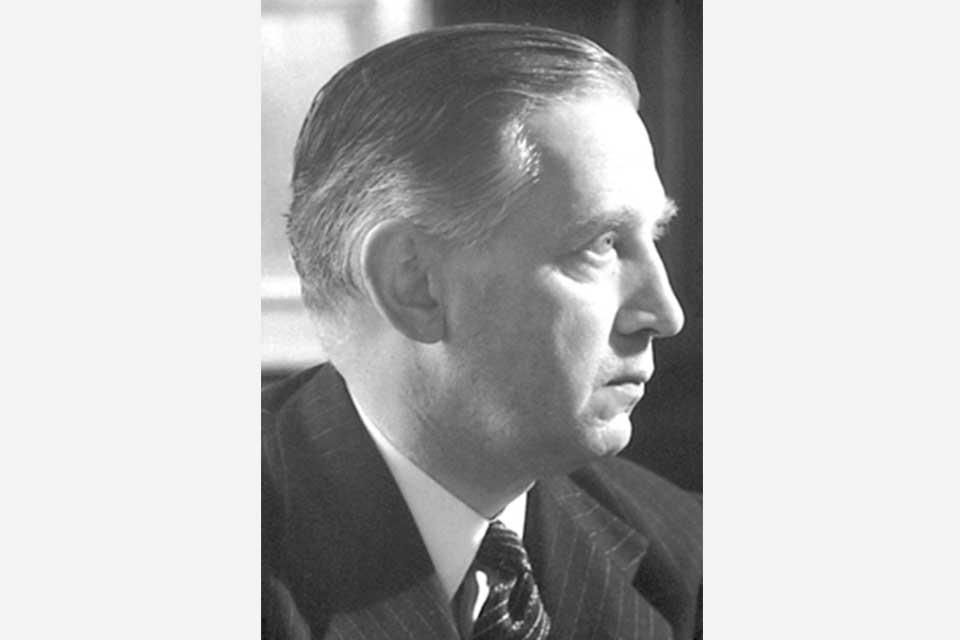The night of 11-12 December marks 100 years since Edward Appleton’s historic experiment in Oxford, using radio waves to investigate the layers of charged particles in the Earth’s ionosphere; Department of Physics alumnus Timothy Baker shines a light on Oxford's role in the Nobel laureate’s discovery.
Appleton had recently arrived at King’s College, London. With his graduate student Miles Barnett, he came to what was then the Electrical Laboratory (now the Townsend Building, it was then separate from the Clarendon Laboratory), to set up his receiver. Appleton’s host, who helped with the experiment, was Walter Gill, a specialist in radio technology. Until shortly before, Appleton had been researching thermionic valves and the effect of lightning on radio transmissions at the Cavendish Laboratory, Cambridge.
Earlier in 1924 Appleton had set Barnett to measure the strength of radio signals received at Cambridge from the BBC’s ‘2LO’ Wireless Station in London. They found that the signal was more variable at night, with repeated ‘fading’, than in the day. Appleton thought the fading was caused by interference between a direct ground wave and a sky wave reflected from an ionised layer in the upper atmosphere that was influenced by the Sun.
Balfour Stewart had theorised in the 1860s that daily changes in the Earth’s magnetic field had a solar cause. In 1901 Guiglelmo Marconi’s transmission of radio signals from Cornwall to Newfoundland led to questions about how the radio waves could bend around the surface of the Earth. Oliver Heaviside, Edward Kennelly, and Willam Eccles explained these phenomena by theorising that there was an ionised conducting layer in the atomosphere, but no one had as yet proved its existence.
Appleton suggested doing so by receiving a pulsed signal whose frequency was regularly varied around a mean value. From the mean frequency, the frequency of the modulation, and the frequency of the beats in the received signal, the difference in the distance travelled by the ground and sky waves could be calculated, and thence, by triangulation, the altitude of the reflecting layer.
The BBC agreed to provide an experimental pulsed signal from its transmitter after it had finished broadcasting, but it could not do so from 2LO, so it offered its ‘6BM’ station at Bournemouth instead. For a clear signal, the strength of the ground and sky waves needed to be equivalent, and Cambridge was too far from Bournemouth to achieve this – hence why Appleton decided to set up his receiver at Oxford.
The experiment was arranged for after the BBC had gone off-air on 11 December 1924. The set-up complete, as they waited expectantly for the broadcast to finish, Barnett said: ‘And I always thought I liked dance music’. Eventually, just before midnight, they received a telephone call from Bournemouth to stand by, and shortly afterwards, in the small hours of 12 December, they started to obtain clear evidence of beats which pointed to an altitude of about 100km for the reflection.
There remained the possibility that the interference came from a signal reflected at ground level by hills, so in early 1925 Appleton and Barnett conducted further experiments at Oxford, using both a looped aerial and a vertical antenna, which showed that part of the signal arrived at a steep angle from the sky. And so the existence of the Kennelly-Heaviside (E) layer of charged particles in the ionosphere was proved, by refraction through and reflection from which, as the ion density and thus refractive index changes, radio waves are able to travel round the curvature of the earth.
The experiment was the first use of radio waves for distance measurement. It prompted Appleton’s further extensive exploration, at King’s College and at his experimental stations near Peterborough, in London, and at Slough, of the ionosphere and its behaviour, with far-reaching consequences for both physics and technology. He found that the E layer broke up at dawn, discovered the higher-level Appleton (F) layer of charged particles, by which radio waves are reflected during the day, and found the D layer, split off beneath the E layer later in the day, and that the F layer also splits in certain conditions. He measured the altitude of the E layer at 50 miles and the F layer at 170 miles, and variations in the ionisation of different layers of the atmosphere through the day. On the basis of regular reports from a worldwide network of ionospheric observatories, he identified magnetically induced variations in the heights of the ionised layers, and the electric currents induced by the tidal movement of their particles through the Earth’s magnetic field. For this work, which assisted the determination of the best wavelengths for radio transmission, Appleton won the Nobel Prize for Physics in 1947.
Appleton suggested in 1924 that high frequency, short wavelength radio waves should be less subject to absorption and attenuation than long waves, and he went on to use these waves to probe the ionisation of the atmosphere, and identify the point at which it becomes transparent to radio waves: the ‘window’ that is used for radio astronomy. Appleton also perfected the pulse technique that Robert Watson-Watt used, with higher power and shorter pulses, for radar.
Radar in turn was destined to become the driving force for the emergence of the Clarendon Laboratory, by now a physics powerhouse, as a leader of microwave research during and after the Second World War. Walter Gill had already, in 1922, along with Clarendon Laboratory demonstrator and Oxford brewer James Morrell, researched the relationship between oscillating frequency and electrode characteristics: one of the foundations of the development of magnetrons as microwave generators.

